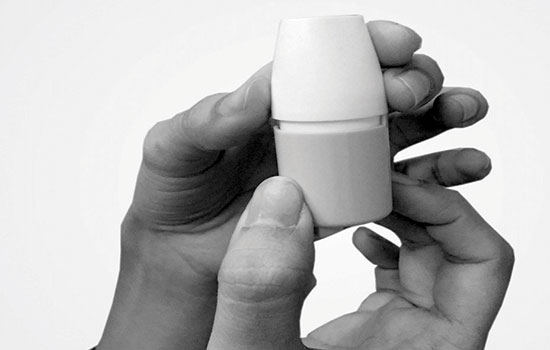22 March 2017. Results from a clinical trial show a dry-powder inhaled form of the drug oxytocin works in the body much like the injected form, given to prevent postpartum hemorrhage, excessive bleeding in some women after childbirth. A team from Monash University in Melbourne, Australia and drug-maker GlaxoSmithKline in Cambridge, U.K. reported its findings on 21 March at the Royal College of Obstetricians and Gynaecologists World Congress in Cape Town, South Africa.
The authors cite data showing some 300,000 women die each year from complications of childbirth and pregnancy, with postpartum hemorrhage accounting for 20 percent of maternal deaths. Some bleeding in the uterus is expected during childbirth, as the placenta separates from the uterus. In about 6 percent of births, however, bleeding becomes excessive, which in many cases can be prevented with an injection of the oxytocin.
The drug oxytocin is a hormone and neurotransmitter released by the pituitary gland in the brain that, among other things, contracts muscles in the uterus and helps restrict blood flow. While injected forms of oxytocin are widely available in developed countries, the drug requires refrigeration and trained clinicians to administer. In lower-resource regions, however, these conditions are not often met, making oxytocin less available for mothers, and increasing their risk of postpartum hemorrhage.
Researchers from the Institute of Pharmaceutical Sciences at Monash and GlaxoSmithKline developed a dry-powder form of oxytocin that can be taken in measured doses with an inhaler, like an asthma treatment. As a powder, the drug remains usable at varying temperatures, thus not needing refrigeration.
The early-stage clinical trial recruited 16 women volunteers in the U.K., age 18 to 45, for the trial that aimed to determine if the inhaled form of oxytocin worked like the injections. Participants were randomly assigned to receive either an injection of oxytocin, 1 of 4 dosage levels of inhaled oxytocin powder, or a placebo.
The research team looked for indicators of the inhaled drug’s safety, such as reports of respiratory and other adverse effects, as well as blood cell counts and the presence of proteins, ketones or metabolized fat, and glucose in urine samples. The researchers also took electrocardiograms and measured vital signs including blood pressure, pulse, and heart rates.
The team likewise took multiple daily blood samples each day for 4 days for indicators of chemical activity of the drug in participants. The measures included concentrations of oxytocin in plasma from injected and inhaled forms of the drug.
The results show for the 15 women completing the study, no serious adverse effects, nor any clinically significant safety issues were reported. In addition, the concentration profiles of oxytocin in blood plasma were similar for injected and inhaled forms of the drug, which suggest inhaled doses can deliver oxytocin to women as effectively as injections.
Pharmaceutical scientist Michelle McIntosh, who led the Monash part of the research team, says in a university statement, the findings should allow inhaled oxytocin to be available sooner than usual. “These results show that oxytocin can be delivered similarly via inhalation or injection,” notes McIntosh, “and therefore we are less likely to be required to conduct the extensive and costly trials needed for an entirely new drug.
“Instead, we should be able to move forward with trials on a much smaller scale, featuring patients numbering in the hundreds rather than tens of thousands, potentially making the medicine available much sooner.”
More from Science & Enterprise:


 RSS - Posts
RSS - Posts
You must be logged in to post a comment.